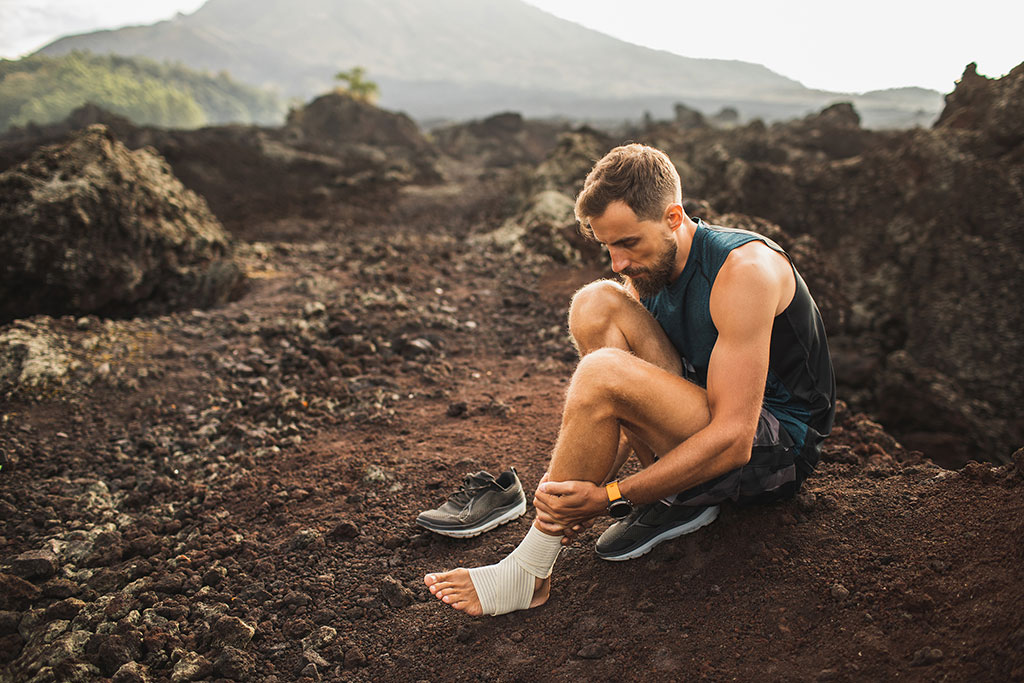Forced Rest for Better Performance: When Injuries Are a Blessing in Disguise

Here we are — nearing the end of a long summer of training. You probably have some prep races under your belt for your key event; your big race is on the horizon. And at the worst possible time, you notice something is wrong. You have an injury. All you can think is that all your hard work and dedication is flying out the window. What do you do now? Here are some ideas to help get you back on track and maintain your sanity.
First, let me assure you that you are not alone. Whether this is your first time preparing for a race or you are a seasoned veteran racer, this scenario is not unusual. I have been involved as an athlete and coach of endurance for over 25 years, and haven’t met anyone who has never been injured at some point in their athletic journey. And it usually happens right at the worst possible time, when you are coming into a key race.
Why are you injured? Simply put, because you have over-stepped the limits of your body’s ability to adapt to stress. Stress comes in many different shapes and forms, but injury always boils down to this principal. Everything counts when we consider stress, so this includes all your various life stresses as much as it does your specific training stress. Getting injured leading to a race is usually a linear event: Your training volume and intensity have been slowly building and you have reached the peak, only to have your body breakdown. Other times, there are more complex issues coming together that take you down, and that may take you a while to understand and unwind. Whatever the underlying cause, getting injured is a rite of passage. And it’s a necessary event to gain experience and, most importantly, to learn how to listen to your body.
Let’s say you’re injured and don’t have much time before the big event. Now what? Let’s just go ahead and take it to the worst-case scenario. The truth is, you may not be able to get healthy in time for your big race. Okay, you’re still alive, right? There is always another race to do. And if you miss this race, it is an opportunity to do a better job preparing for the next time. Live and learn. But what if you aren’t 100 percent for the race, but you are sound enough to go ahead and do it anyway? For some, this is a viable option. But you may set yourself up for disappointment if you don’t accept your current limitations, whether it is loss of fitness from the injury, or physical pain or limitation from the injury. If you choose to do a race in this situation, do yourself a favor and lighten up! If you go in with lower expectations, you may surprise yourself and do better than you thought. The final scenario is that you may have enough time to get back to 100 percent before your race. Getting the correct treatment or, in some cases, just having rest forced upon you will make all the difference when it comes to getting you to the start line in top shape.
Your body often tells you what it needs, even though your head (or coach) is telling you to forge ahead with training. Your body is always giving you signals, and it takes a lot of self-awareness to really understand what is best at any given time in your training. There are a lot of common training beliefs that do not match up with individual needs. You have to find the right balance of stress and recovery to allow for the most personal growth. For some, this means restructuring your training (for example, doing a long run or speed work every other week instead of every week). By ignoring your body’s signals, your development and athletic performance will suffer over time. And you will be more likely to become injured if you try bullying your way through your training without listening to your body.
It is important to seek out help to identify your injury and take measures to recover as quickly as possible. It is hard to generalize what type of practitioner is most qualified to help, as every injury and every person is different. Some options to explore include physical therapists, massage therapists, acupuncturists, osteopaths, chiropractors, or physicians — best within a specialty: i.e., orthopedists. Start with whatever you are familiar with. Or get a referral from someone you trust. Sometimes it takes a while to understand your injury and resolve it, so be patient and trust that there is a solution — even if you haven’t found it yet. In some cases, you will find that you need ongoing therapy to keep yourself healthy. Everyone has weaknesses that tend to break down when they get over-stressed. If you can identify your patterns and do corrective maintenance (either yourself or with a therapist), this is often enough to keep you injury-free.
What do you do when you’re challenged with an injury? It’s best to accept it, focus on what you need to do to resolve it, and get back on track as quickly as possible. If you are on the right track in your training and racing, you will not get injured. Injuries, like a lot of things in life, are a means to an end. They give you the opportunity to learn and grow. Always look at them as an opportunity to correct your path.
About the Author
Tim Monaco is a multi-sport coach, licensed massage therapist, corrective exercise specialist, holistic lifestyle coach, and certified metabolic typing advisor from Bend, OR.
Originally published in Fall of 2011 Issue
